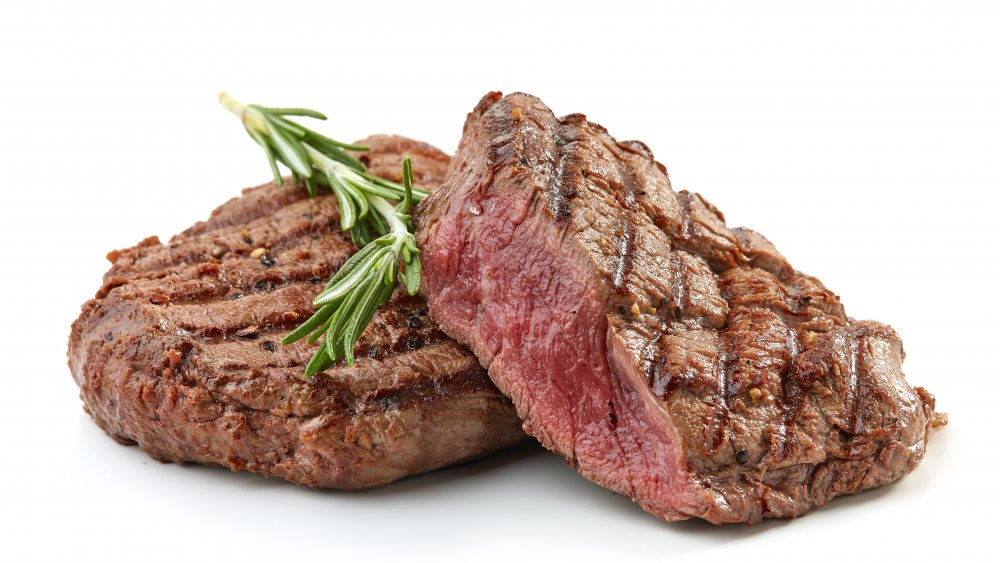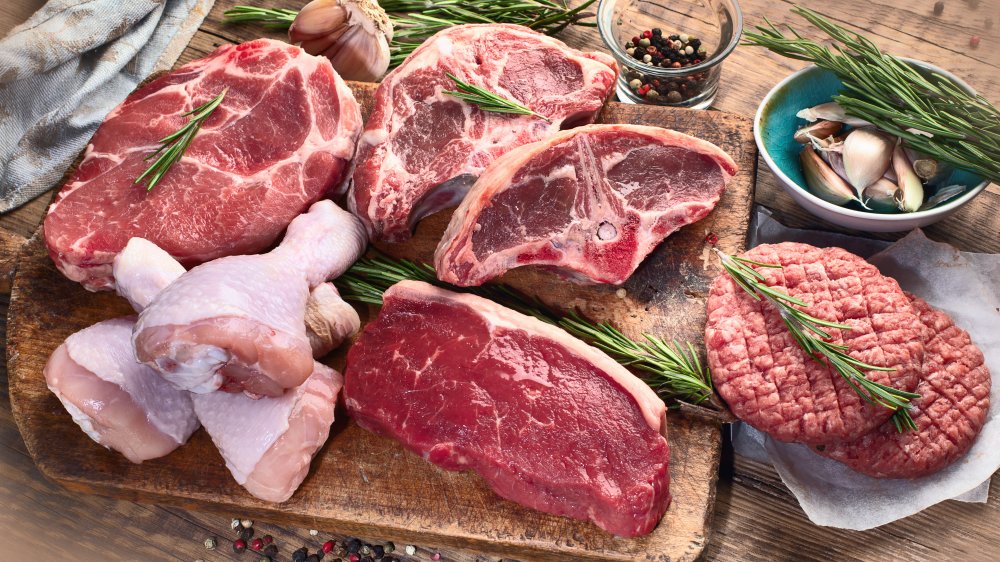This Is What You Need To Do If You Undercook Meat
Finding the perfect balance between undercooked and overcooked meat is no easy feat. The United States Department of Agriculture recommends an internal temperature of 165 degrees for poultry, 160 degrees for ground meat, and 145 for beef, pork, and lamb to ensure that any potentially hazardous bacteria in the meat has been killed by the heat (via United States Department of Agriculture). The other end of the spectrum is cooking your meat for too long, which can result in a tough, dry, and chewy finished product.
With the intent of avoiding the latter scenario, you may be tempted to pull it from its heat source before it's been cooked all the way through to the recommended temperature. Investing in a meat thermometer (not much of a hefty investment at all) is a good way to prevent this problem, but if you haven't gotten around to it yet, all is not lost.
What to do if your meat is undercooked
If you're playing it cautious and find that you've pulled your meat before it's finished, it's not the end of the world. There are a couple of options to ensure your food is thoroughly cooked without overcooking it.
The first is to simply return the heat source where it was first cooked. You can throw a steak back on the grill or a pork chop back in the skillet with no problem (via Yummy). Or, if you're looking to ensure an even cook without a ton of flipping sides, you can put it in the oven at around 250 degrees Fahrenheit, or even a little bit warmer if time is an issue.
If you're working with a particularly thick cut and you're worried about burning the exterior of the meat in the quest to cook it all the way through, you can add some water to the pan and put a lid on it as well. The steam will help to gently cook it, though this trick shouldn't be utilized if you want to keep the exterior crispy.

